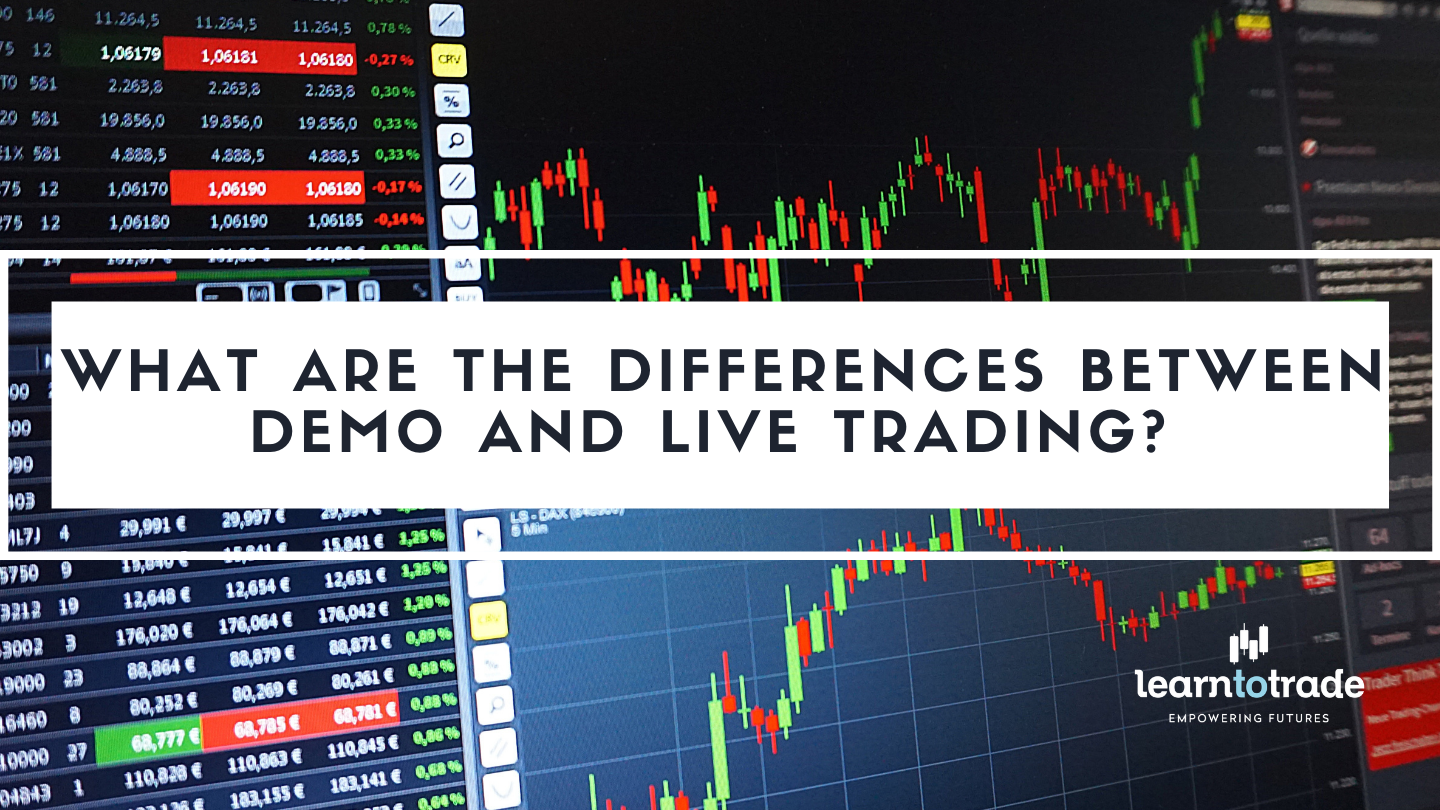What are the differences between Demo and Live Trading?

If you are a newbie trader, you may have been encouraged to practice demo trading before risking your money in a live account.
Through demo trading, you were able to apply all the skills you have learned and honed them for months or even years, you have developed a trading plan and used proper risk management, and understood trading psychology without betting your hard-earned cash.
While you are profiting in your demo trading, you are starting to build up confidence in your trading skills and you decided it was time to open a live account.
You say to yourself that you have been hitting consecutive wins on your demo and think that you can easily replicate this in a live account.
Most newbies open their live accounts because they believe that their demo trading results can easily be replicated on a live account. However, if you talk about “easy”, that is not entirely true.
Here are some reasons why:
Emotions kick in when faced with real risk
We always hear from professionals or our mentors to be as emotionless as possible and trade with a rational mind when it comes to placing our trades. However, being emotionless is not humanely possible.
In demo trading, you can completely be emotionless because there is no real money or risk involved and you know that when you lose in your demo trades, you will not lose anything of real value.
You can compare this as soon as you enter your first trade in a live demo account. You will feel nervous, you will feel shaky, your heart beats every time the market fluctuates and it will feel like your eyes are glued to your monitor screen.
There is no real risk on demo trading
We know that we all have tried treating our demo trades as seriously as possible. We may suffer losses here and there, but subconsciously your fight or flight response does not alert you because you know for yourself that there is no real money involved and a demo account can be refilled and you may start again.
In contrast, if you lose real money in live trading, it can hurt you and your trading confidence and your trading decisions will be clouded with negative emotions.
You might get back to your bad trading habits
With the pressure of dealing with real monetary risk, you’ll be emotionally invested in the outcome of your trades.
Just when you thought that you have overcome your bad habits, you might just find yourself committing the same mistakes again such as moving your stop losses, cutting off your winning trades too early, and revenge trading.
All of this is a result from you trying to prove that your live account can be as profitable as your demo account. This mindset will lead you to more problems like overtrading and completely obliterating your trading plan and risk management.
So how do you deal with these differences?
A good practice that you can start with in your live trading is to copy the mental state of emotionless that you had when you are placing trades on your demo account.
You can start by reducing the number of trades that you do thus further reducing risk at your first live trades. Once your confidence builds up and you feel comfortable with live trading, you can continue to increase your trades but you should always consider your risk management and trade only the amount that you can afford to lose.
We also recommend that you focus on the process first before the profits. Take one trade at a time and always follow your trading plan and risk management. With this in mind, it will help you focus more on high probability trades and will prevent you to take so-so trades.
Switching from demo to live trading is often hard and will sometimes keep you from taking trades because of fear of losing. Losing is part of the game that’s why you should need proper risk management to minimize your losses.
You might make a few losses in your first few live trades, but it shouldn’t stop you from making it back. What you have to do is to start slowly and keep your trades to a minimum and make sure that you are also preparing yourself for the emotional commitment needed for live trading.
Don’t forget to follow and subscribe for more updates about market trends, analysis, forex news, strategies and more!
Do you want to learn more about forex trading? Sign up now on our FREE forex webinar and reserve your FREE seats while it still lasts!
Risk Disclaimer:
Information on this page is solely for educational purposes only and is not in any way a recommendation to buy or sell certain assets. You should do your thorough research before investing in any asset. Learn to trade does not fully guarantee that this information is free from errors or misstatements. It also does not ensure that the data is entirely timely. Investing in the Foreign Exchange Market involves a great deal of risk which may result in the loss of a portion or your full investment. All risks, losses and costs associated with investing, including total loss of principal and emotional distress, are your responsibility.
